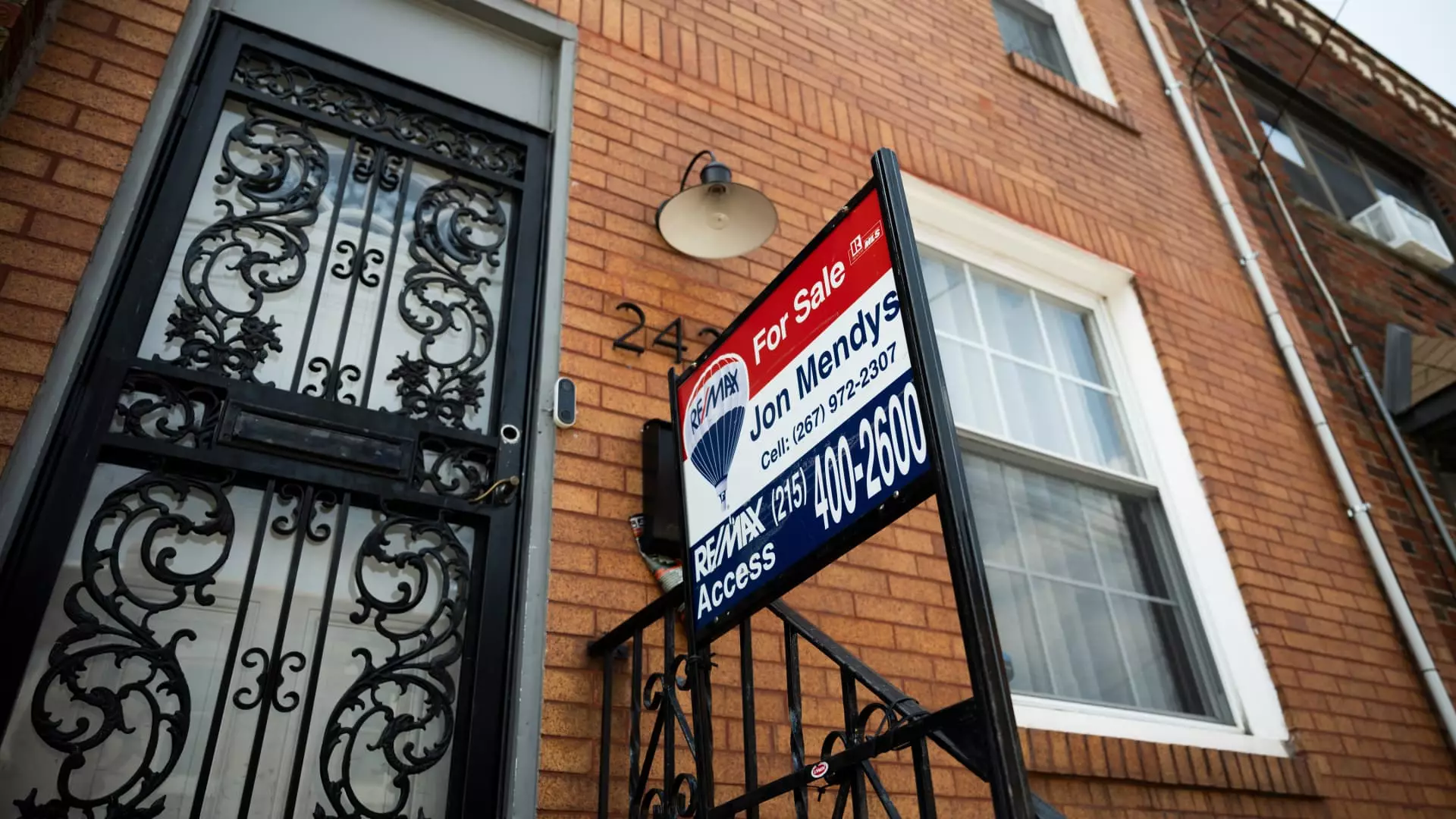The U.S. housing market is currently grappling with multifaceted challenges, highlighting a landscape that appears increasingly inhospitable for potential buyers. As reports illuminate, January saw a notable 4.9% decline in the sales of previously-owned homes, plummeting to an annualized figure of 4.08 million units. This downturn eclipsed analysts’ expectations of a mere 2.6% decrease and confirms a trend that is disheartening for many stakeholders in the real estate sector. Even though sales were slightly higher than in January 2024, the overall trajectory remains distressing as these figures hover near a 15-year low.
The data gleaned from sales reflects the circumstances of contracts that likely originated during the previous months when mortgage rates saw a temporary dip from above 7% into the 6% range. However, the current state of affairs suggests that these lower rates have had little impact on revitalizing consumer confidence or spurring increased sales activity.
A critical examination of the housing market reveals that exorbitant prices coupled with persistently high mortgage rates continue to undermine affordability. As Lawrence Yun, the Chief Economist for the National Association of Realtors (NAR), points out, the Federal Reserve’s attempts to relieve short-term interest rates have not translated into lower mortgage rates—a critical factor for many aspiring homeowners. Consequently, housing affordability remains not merely a challenge but a formidable obstacle that many cannot surmount.
The statistical landscape indicates a notable uptick in inventory with 1.18 million homes available as of January, representing a 3.5% rise from December and a striking 17% increase from January 2024. However, despite this increment, the available housing supply remains at a tight 3.5 months based on current sales levels. A balanced market is considered to be around 6 months of supply, suggesting that buyers are still faced with limited choices. One revealing statistic is that homes spent an average of 41 days on the market—the longest duration since the onset of the COVID-19 pandemic.
Despite a minor uptick in inventory, the persistent scarcity of homes continues to exert upward pressure on prices. The median price of homes sold in January reached a staggering $396,900, reflecting a 4.8% increase from the previous year and marking the highest median price recorded for January. Strikingly, price appreciation was not confined to a particular region; all four areas monitored by the NAR experienced gains. A disconcerting trend is observed where about 15% of homes sold for over the listing price, a statistic that has remained relatively steady over the past year.
Yun notes that an increase in available housing supply could enable well-qualified buyers to enter the market. Still, he reiterates a critical point: for many potential buyers, especially first-time homebuyers, both greater inventory and reduced mortgage rates are essential.
Shifting Dynamics in Buyer Profiles
Diving into the composition of current home sales reveals important trends worthy of attention. All-cash offers now constitute 29% of total sales—historically significant, yet a decline from 32% seen the previous year. First-time buyers continue to battle for entry into the market, representing only 28% of sales, a figure that has remained unchanged but is drastically below the historical averages of approximately 40%.
Interestingly, the distribution of sales activity appears uneven across pricing tiers. Homes priced between $100,000 and $250,000 have experienced a 1.2% decrease in sales year-over-year, while luxury markets for homes above $1 million have seen sales soar nearly 27%. This disparity indicates that the present housing climate may be favoring affluent buyers as rates and prices challenge the wallets of lower and middle-income consumers.
Real estate professionals are increasingly vocal about the diminished foot traffic from interested buyers, with Yun observing that despite more listings, buyers are not forthcoming. As the U.S. housing market continues to reflect these ongoing challenges, it remains imperative to examine potential strategies and interventions that may enable a recovery. Until then, the outlook appears tenuous, marked by a perfect storm of high prices, stubborn mortgage rates, and waning buyer enthusiasm. The road ahead demands astute navigation by both real estate stakeholders and policymakers as they grapple with an evolving and complex housing environment.

